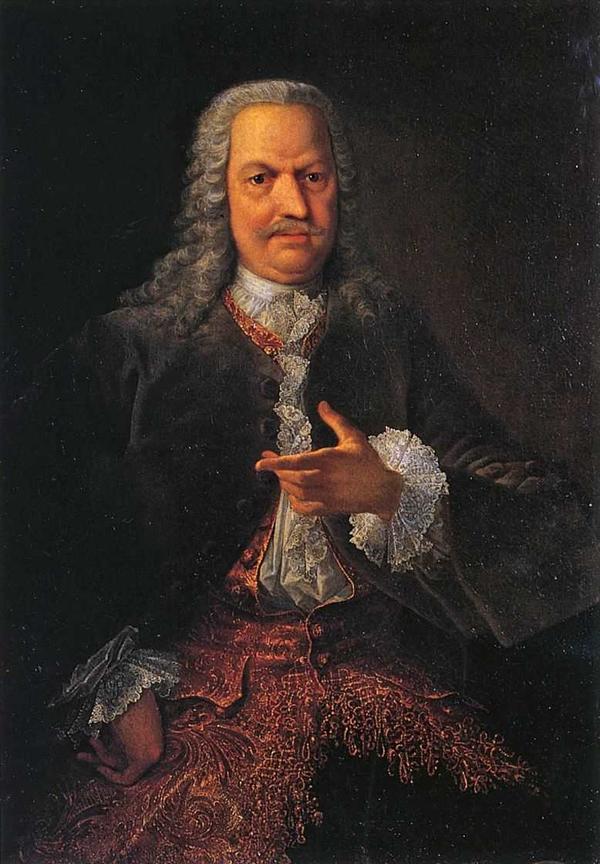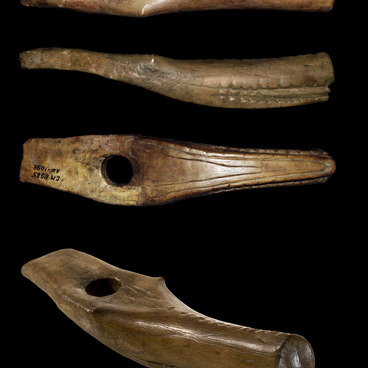In the 18th-19th centuries, magnets in a copper setting occupied a special place among Ural products. They were a curio, and wealthy people kept exotic appliances in their homes as souvenirs. Magnets were used in navigation, in the mining industry, for experiments in scientific laboratories, so they were manufactured in large quantities. The miracles of magnetism were demonstrated by magicians in their performances.
Magnet
Время создания
18 century
Размер
10x13,5x5 cm
10х13.5х5 cm
10х13.5х5 cm
Техника
Magnetite, bronze
2
Открыть в приложении#9
Magnet
#5
#6
Particularly addicted to magnets was Akinfy Demidov — the founder of the mining industry in the Urals and Siberia. His collection comprised seventy-six magnets, which were set in silver and copper. Large magnets were scarce, but Akinfy Demidov had several large specimens. One of them weighed six kilograms and could withstand a weight of up to sixteen kilograms. The manufacturer donated two other huge cubic-shaped magnets for the thrones of the church of the Nizhny Tagil Factory. The historian Gerhard Friedrich Müller saw in Akinfy Demidov’s possession a magnet weighing “weighing thirteen pounds, which held a cannon attached to it weighing one pood”. Only two magnets from Akinfiy Demidov’s collection have survived to this day.
Georg Christoph Grooth. Portrait А. Н. Демидова.
1741–1745. Canvas, oil. Nizhny Tagil Museum-Reserve. Source: commons.wikimedia.org.
#7
At their factories, the Demidovs began to smelt metal from magnetic iron ore for the first time. The Vysokogorsk ore of the Ural Mountains possessed not only magnetic, but also mechanical properties. It contained about seventy percent of iron, and the metal smelted from it was pure and of high quality. In addition to pure iron, there was copper in the ore, which increased the anti-corrosion properties of the metal. Iron-ore deposits were a symbol of the mining riches of the Siberian land.
#8
An unknown 18th-century master made this magnet from magnetic ore — a hand specimen. The mineral was mined in Mount Vysokaya in the Sverdlovsk region, in the vicinity of the Nizhny Tagil Metallurgical Factory. Previously, the mountain was called Magnetic and belonged to the rich manufactures Demidovs.
#11
The author of the work dressed the stone and gave it the shape of a quadrilateral. Then he put the finished hand specimen into a decorative copper box. From below, he hung an iron plate with a figured frame and a hook at the end. The magnet has an inscription: ‘A stone weighing 2 pounds 48 zolotniks lifts a weight of 12 pounds 84 zolotniks’. In modern units of measurement: a magnet weighing one kilogram can lift a load of six kilograms. Today, it has practically lost its ability to draw objects.
#10
The exhibit entered the museum collection from the antique lover Dmitry Pleshkov at the beginning of the 20th century. In one of his estate’s manors in Yekaterinburg, Dmitry Pleshkov set up an antique shop, and rented another one out for watch and jewelry workshops.
#12
O.E. Kler Sverdlovsk Regional Ethnographic Museum
читать дальшескрыть
00:00
00:00
1x
Magnet
Время создания
18 century
Размер
10x13,5x5 cm
10х13.5х5 cm
10х13.5х5 cm
Техника
Magnetite, bronze
2
Открыть в приложении
Поделиться




